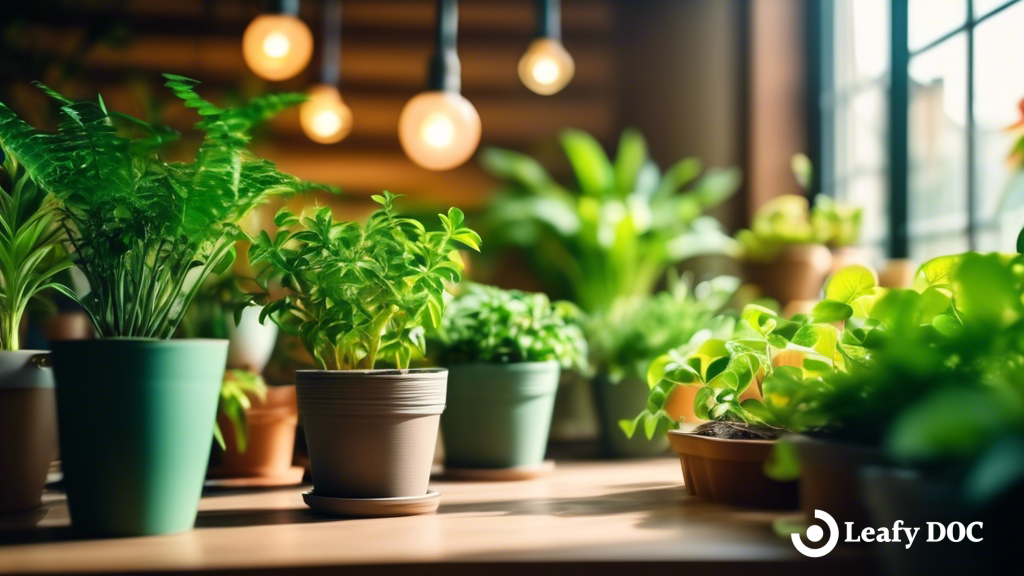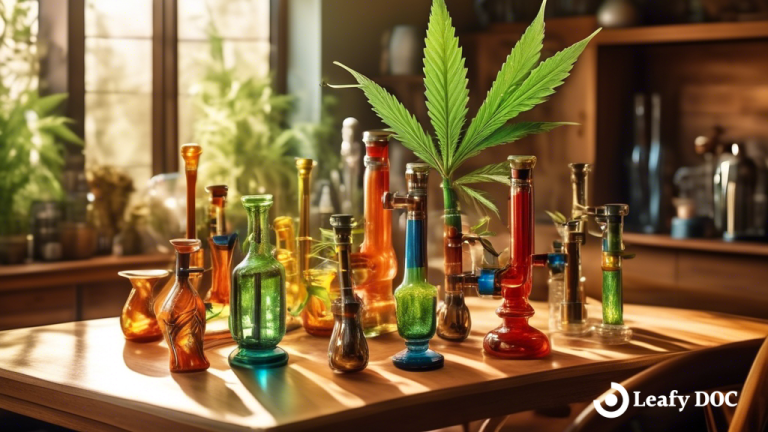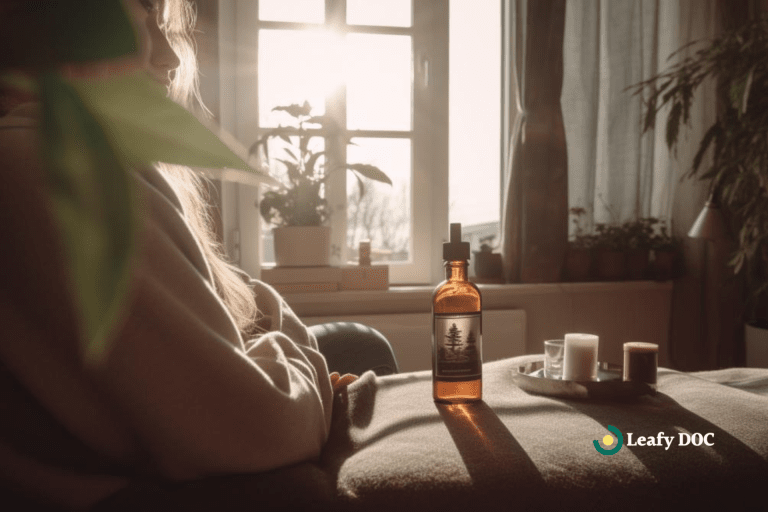Indoor Growing Tips For Successful Cultivation
by Ayesha Aziz · April 25, 2024
Ready to take your indoor growing game to the next level? Learn expert tips for successful cultivation and maximize your yields with proven techniques. Click now to discover how to grow healthy plants indoors!

Do you have a green thumb and a passion for growing plants indoors? If so, you’ve come to the right place! Indoor growing can be a rewarding and fulfilling hobby, but it requires some knowledge and care to be successful.
In this article, we will provide you with tips and tricks to help you cultivate your indoor garden with ease and achieve bountiful harvests.
From choosing the right lighting to managing nutrients and maintaining optimal temperature and humidity levels, we will cover all the essential aspects of indoor growing.
We’ll also discuss how to prevent pests and diseases from wreaking havoc on your plants, as well as the importance of regular monitoring and adjustments to ensure your plants thrive.
So, get ready to dive into the world of indoor gardening and watch your plants flourish under your expert care!
Key Takeaways
- Choose the right lighting, such as full spectrum LED grow lights or fluorescent lights
- Properly manage nutrients with a balanced diet and adjusting pH levels
- Maintain optimal temperature (70-85°F) and humidity levels (50-60%)
- Prevent pests and diseases through regular inspection and using natural remedies
Choosing the Right Lighting
So, you think you can just use any old light bulb for your indoor plants? Good luck with that!
When it comes to choosing the right lighting for your indoor garden, you need to be strategic. Different plants have different light requirements, so it’s essential to do your research and invest in the appropriate lighting system.
LED grow lights are a popular choice for indoor cultivation, as they provide the full spectrum of light that plants need for photosynthesis. They’re also energy-efficient and produce less heat, which can be beneficial for maintaining the ideal growing conditions.
If you’re looking to save some money, fluorescent lights can also be a good option for certain plants. They’re less expensive than LED lights and work well for plants that don’t require as much light intensity. However, keep in mind that fluorescent lights will need to be replaced more frequently than LED lights.
Ultimately, the key to successful indoor cultivation is understanding the lighting needs of your plants and providing them with the right environment to thrive. By choosing the right lighting system, you’ll be one step closer to a successful indoor garden.
Proper Nutrient Management
To achieve optimal results, it’s essential to carefully manage nutrients in your plants. Nutrient management plays a crucial role in the growth and health of your indoor plants.
Here are some key tips to help you effectively manage the nutrients for successful cultivation:
- Balanced Diet: Just like humans, plants need a balanced diet to thrive. Make sure to provide a mix of essential nutrients such as nitrogen, phosphorus, and potassium to support healthy growth.
- pH Levels: Monitoring and adjusting the pH levels of your plant’s soil or growing medium is vital for nutrient absorption. Maintain the optimal pH range to ensure your plants can take in the nutrients they need.
- Avoid Overfeeding: While you may think more nutrients are better, overfeeding your plants can actually harm them. Follow the recommended dosage on your fertilizer and adjust based on your plant’s specific needs.
Proper nutrient management is key to unlocking the full potential of your indoor plants. By following these tips and staying attentive to your plant’s needs, you can create a thriving indoor garden that will bring you joy and satisfaction.
Maintaining Optimal Temperature and Humidity Levels
Keep an eye on the thermometer and make sure the air is warm and moist to create the perfect environment for your plants.
Remember, plants thrive in specific temperature and humidity ranges, so it’s crucial to monitor these factors regularly.
Aim for a temperature between 70-85°F (21-29°C) during the day and slightly cooler at night.
Humidity levels should ideally be around 50-60%, but this can vary depending on the plant species you are growing.
To maintain optimal temperature and humidity levels, consider using a humidifier or a dehumidifier to adjust the moisture in the air as needed.
Additionally, investing in a good quality thermometer and hygrometer can help you accurately track these conditions.
Be proactive in adjusting the temperature and humidity levels in your indoor growing space to provide the best possible environment for your plants to thrive.
Remember, a comfortable environment for your plants will lead to successful cultivation and a bountiful harvest.
Pest and Disease Prevention
MAIN TOPIC:
indoor growing tips for successful cultivation
PREVIOUS SUBTOPIC: "Maintaining Optimal Temperature and Humidity Levels"
CURRENT SUBTOPIC: "Pest and Disease Prevention"
As you’re tending to your plants, don’t forget to regularly inspect them for any signs of pests or diseases that could harm your indoor garden. Prevention is key when it comes to keeping your plants healthy and thriving. By taking proactive measures, you can avoid the stress and hassle of dealing with infestations or diseases down the line.
Here is a helpful table to guide you in preventing pests and diseases in your indoor garden:
| Preventive Measures | Description |
|---|---|
| Regularly inspect plants | Check leaves, stems, and soil for any signs of pests or diseases. Early detection is crucial for prevention. |
| Maintain proper airflow | Good ventilation can help prevent the buildup of moisture, which can attract pests and lead to diseases. |
| Use natural remedies | Consider using natural solutions like neem oil or insecticidal soap to deter pests without harming your plants. |
| Quarantine new plants | Before introducing new plants to your indoor garden, isolate them for a few weeks to prevent potential contamination. |
Regular Monitoring and Adjustments
Make sure you regularly monitor and adjust conditions in your indoor garden to ensure optimal growth and health for your plants.
Keep a close eye on the temperature, humidity levels, and lighting to make sure they’re within the ideal range for your specific plants.
Check for any signs of nutrient deficiencies or excesses in your plants and adjust your feeding schedule accordingly. By staying vigilant and making necessary adjustments, you can prevent any issues from escalating and ensure your plants thrive.
Remember to also monitor your plants for any signs of pests or diseases. Catching these issues early can make a huge difference in preventing them from spreading and causing damage to your indoor garden.
Regularly inspect the leaves, stems, and roots of your plants for any abnormalities and take action promptly if you notice anything suspicious. By staying proactive and making adjustments as needed, you can create a healthy and thriving indoor garden that will reward you with beautiful, vibrant plants.
Frequently Asked Questions
How can I prevent my indoor plants from becoming leggy and spindly?
To prevent leggy and spindly indoor plants, ensure they receive enough light to grow strong and compact. Rotate them regularly to promote even growth. Prune regularly to encourage bushier growth and remove excess foliage.
Are there any specific indoor plants that are easier to grow for beginners?
If you’re a beginner, start with hardy plants like Spider Plants, Pothos, or Snake Plants. These low-maintenance options are forgiving of occasional neglect and will thrive in most indoor conditions, making them perfect for new growers like you!
Can I use tap water for watering my indoor plants, or should I use filtered water?
You can use tap water for watering your indoor plants, but it’s best to let it sit out overnight to allow any chlorine to dissipate. Filtered water is also a good option for healthier plants.
What can I do to prevent mold and mildew from developing in my indoor growing environment?
Want to keep mold and mildew at bay in your indoor growing space? Ensure proper ventilation, maintain appropriate humidity levels, and avoid over-watering. Regularly inspect your plants for any signs of mold to prevent spread.
Is it necessary to rotate my indoor plants to ensure even growth and exposure to light?
Yes, it is beneficial to rotate your indoor plants regularly to promote even growth and ensure proper exposure to light. This simple practice can help prevent your plants from leaning towards the light source.
Last Updated: August 8, 2024
Get Approved for Your Medical Marijuana Card in Minutes!

Get Your Medical Card
Connect with a licensed physician online in minutes

Like This Article?
Share with your friends
Table of Contents
Keep Reading
-
A Guide To Cannabis Pipes And Bongs: Which One Is Right For You?
Find the perfect cannabis companion for an elevated smoking experience with our guide to cannabis pipes and bongs. Discover which one is right for you and unleash the adventure now!
-
Managing Chronic Pain With Medical Cannabis: A Comprehensive Guide
Discover the ultimate guide to managing chronic pain naturally with medical cannabis. Say goodbye to discomfort and find relief today! Click here for expert tips and advice.
-
Using Cannabis Tinctures For Relaxation And Stress Relief
Unwind naturally with cannabis tinctures for relaxation and stress relief. Learn how to use this powerful remedy in our ultimate guide and say goodbye to stress today!



